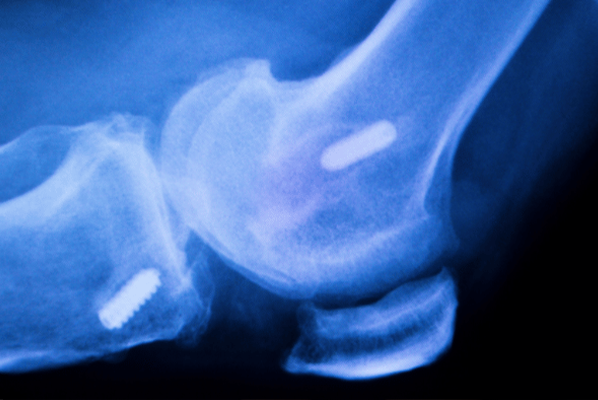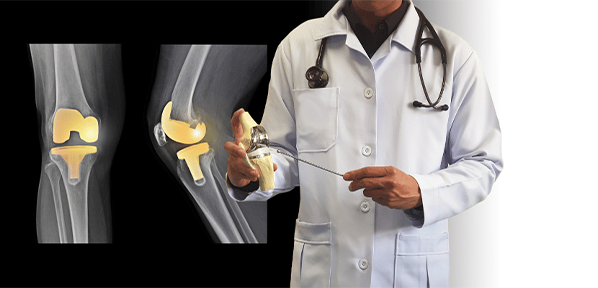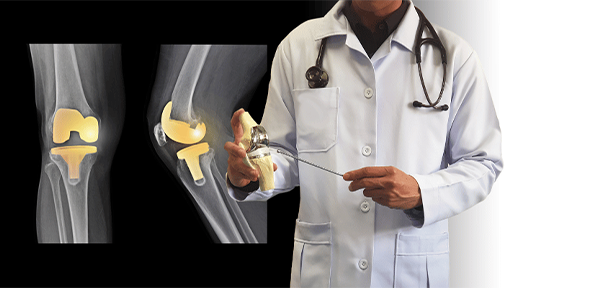Last Updated on August 1, 2023 by Mike
According to the American Academy of Orthopaedic Surgeons, approximately 700,000 knee replacements were performed annually in the United States as of 2014. This number was projected to increase significantly due to factors such as the aging population and increasing rates of obesity.
For many, this surgery is the ticket to a more active life, letting them put the daily struggle with severe knee pain behind them. While it is most certainly a life-changing event, knee replacement is a big decision that is not without challenges and risks. During each stage, before and after surgery, patients face questions, tasks, and considerations for which they will want to be physically and psychologically prepared. From considering surgery to living with an artificial knee, taking the time to get informed will enable you to navigate the process comfortably and with confidence.
Knee Replacement Pathway and Decisions

Dr. Thomas Vail, Professor and Chairman of Orthopedic Surgery, University of San Francisco (UCSF) Medical Center:
“The average age of a patient having a knee replacement in the United States is sixty-eight years of age, and that really hasn’t changed much in the past decade. Knee problems are very common, and that’s something that people should be aware of, and there are a variety of treatments for ailments of the knee.”
Dr. Thomas Coon, Orthopedic Surgeon | Coon Joint Replacement Institute, St. Helena Hospital:
“When it becomes a substantially limiting factor in your life when you can’t go to the grandkid’s ballgame when you can’t climb the bleachers, then it’s time to think about having something done to treat your knee pain.”
While the majority of patients undergo a total knee replacement, some are candidates for partial knee replacement. Regardless of what procedure is right for you, it is important that you find an orthopedic surgeon who is well-trained and has plenty of experience with knee replacement.
What is Total Knee Replacement?

Dr. Thomas Coon:
“In preparation for knee replacement, it’s advisable to be in as good a shape physically as you can. Many of our patients have multiple health issues. You need to try to keep your flexibility and muscle tone so that you can have a rapid recovery after the surgery. Your surgeon or hospital may have a preoperative education program that occurs before you have your total knee replacement.”
Once you have carefully chosen a surgeon and prepared for the costs you might incur, it’s important to educate yourself about what to expect during the operation, recovery, and rehabilitation periods. If possible, talk to others who have had the surgery and ask questions about what to expect. Recovery and rehabilitation can be painful and challenging and will require hard work and dedication.
Jamie Nelson, Physical Therapist, UCSF Medical Center:
“We really work on function in the very beginning. Squats, which is just a small sit-to-stand; straight-leg-raises; knee extensions, where you’re just bending your knee in the air; standing on one leg. You know, balance activity, because you’ve got to be able to balance on one leg in order to walk normally.”
How Do Artificial Knee Implants Work?

Dr. Thomas Vail:
“For most patients, it takes about three months to get back to feeling like yourself. They may feel a little bit like lacking in confidence for a while while they are recovering from knee surgery, and that’s what takes three months to really regain so that you’re moving around without thinking about the knee.”
Eighty percent of artificial knee joints last twenty years. It’s important to maintain a healthy lifestyle, including keeping your weight down and engaging in the appropriate exercise.
Dr. Thomas Coon:
“One of the most rewarding and gratifying things for me is to take patients who are unable to walk or are barely able to walk, perform a fairly short operation, have them up walking the same day, and then see them walk out of the hospital.”
Jamie Nelson:
“It’s an adjustment period for the first six months, but you’ll find that without pain, you’re doing a lot better, and you’re a lot happier person. It’s a very successful surgery.”
Dr. Thomas Vail:
“I always stress to patients, that the more they know, the more they can learn about knee replacement and the expectations after surgery; the more successful the operation will be.”
Faces of Total Knee Replacement

Knee replacement surgery has the power to change your life. Proper planning can reduce problems and stress and will help ensure that you make good decisions and receive the best care. There are many details involved in preparing for, undergoing, recovering from, and living with the procedure. An understanding of the actions you can take at each stage of the process will help you obtain a healthy and pain-free life.
Getting the Most Out of Your Artificial Knee

An orthopedic surgeon can evaluate your eligibility for knee replacement surgery, a common procedure that can help to relieve chronic knee pain. During total knee replacement surgery, a surgeon will remove your damaged knee cartilage and replace it with a mechanical device. Prior to the knee surgery, your surgeon will pick the implant that best fits your needs and anatomy.
Implants include a number of components.
Artificial knee components are constructed from metal, as well as medical-grade plastic called polyethylene. Typically, a metal cap called a femoral component covers the end of the femur bone, and a second metal cap called a tibial component covers the top of the tibia. The two metallic surfaces are separated by a polyethylene insert. During a procedure, the femoral component is put into place, and a plastic spacer and tibial component is inserted on the tibial surface. The damaged cartilage is removed from the patella, and a patellar component is installed over the existing patellar bone. If only part of your knee is damaged, your surgeon may recommend that you have a partial knee replacement, which replaces only a part of your knee.
After knee surgery, a patient should have greater flexion of the knee and an overall greater range of motion. With rehabilitation, patients recover healthy movement of their knees and can engage in many of the activities they once enjoyed.
Source: http://www.healthline.com
